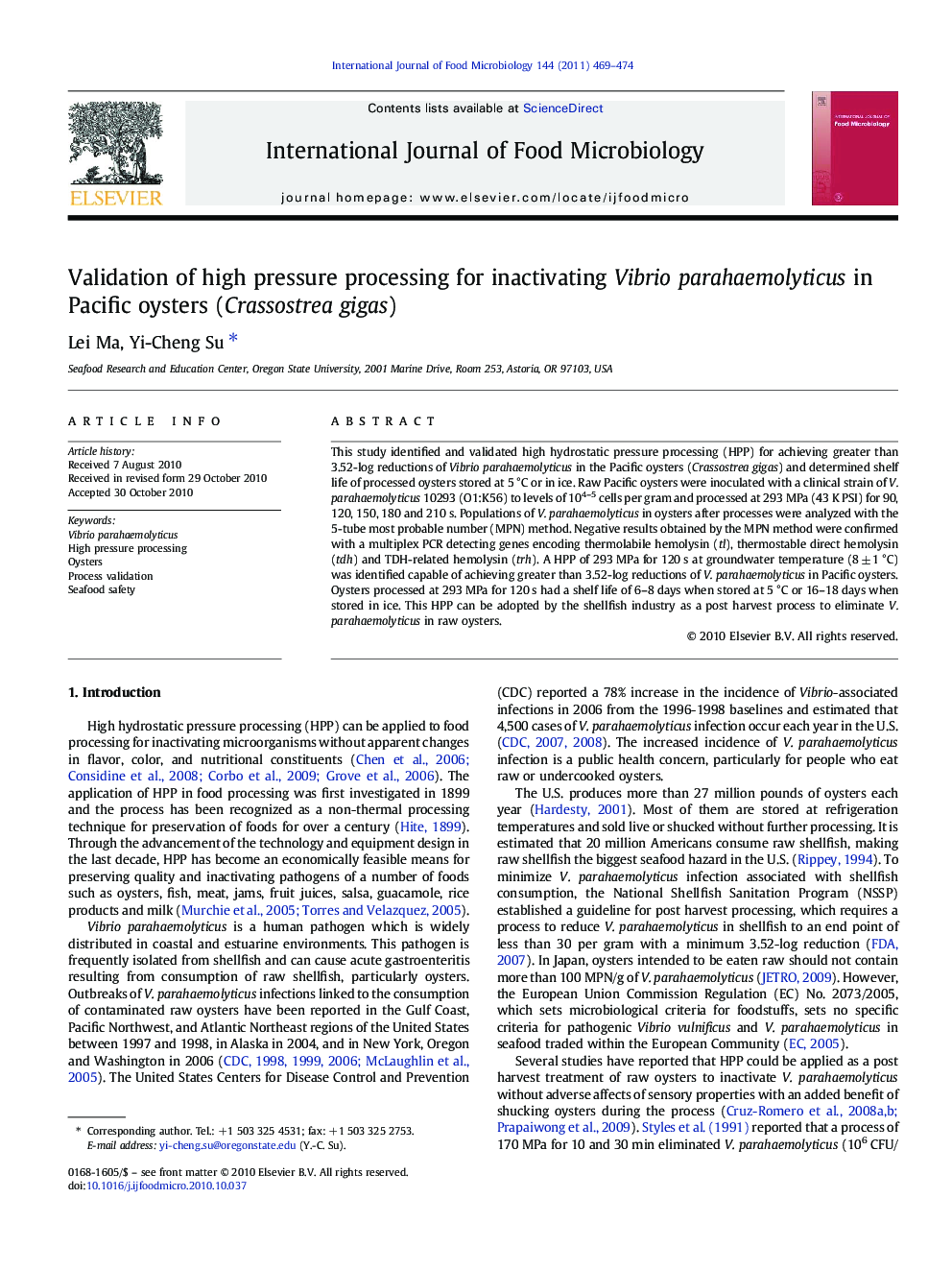| Article ID | Journal | Published Year | Pages | File Type |
|---|---|---|---|---|
| 6290426 | International Journal of Food Microbiology | 2011 | 6 Pages |
This study identified and validated high hydrostatic pressure processing (HPP) for achieving greater than 3.52-log reductions of Vibrio parahaemolyticus in the Pacific oysters (Crassostrea gigas) and determined shelf life of processed oysters stored at 5 °C or in ice. Raw Pacific oysters were inoculated with a clinical strain of V. parahaemolyticus 10293 (O1:K56) to levels of 104-5 cells per gram and processed at 293 MPa (43 K PSI) for 90, 120, 150, 180 and 210 s. Populations of V. parahaemolyticus in oysters after processes were analyzed with the 5-tube most probable number (MPN) method. Negative results obtained by the MPN method were confirmed with a multiplex PCR detecting genes encoding thermolabile hemolysin (tl), thermostable direct hemolysin (tdh) and TDH-related hemolysin (trh). A HPP of 293 MPa for 120 s at groundwater temperature (8 ± 1 °C) was identified capable of achieving greater than 3.52-log reductions of V. parahaemolyticus in Pacific oysters. Oysters processed at 293 MPa for 120 s had a shelf life of 6-8 days when stored at 5 °C or 16-18 days when stored in ice. This HPP can be adopted by the shellfish industry as a post harvest process to eliminate V. parahaemolyticus in raw oysters.
Research highlights⺠HPP (293 MPa, 120 s) reduced V. parahaemolyticus in oysters by > 3.52-log units. ⺠HPP increased shelf life of oysters stored in ice or at 5 °C. ⺠Validation of HPP according to NSSP post harvest processing guidance.
